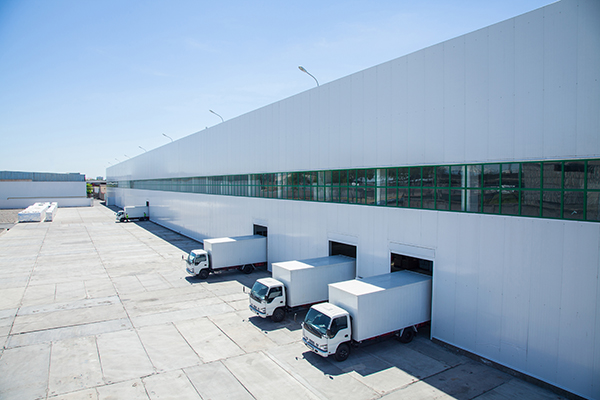COVID-driven e-commerce paces record Q4 industrial & logistics real estate activity, reports JLL
In its “United States Industrial Outlook - Q4 2020,” JLL explained that increased e-commerce activity translated into what it called a steep rise for warehouse space.
A heightened amount of e-commerce activity driven by the ongoing COVID-19 pandemic pushed up various fourth quarter 2020 industrial and logistics real estate activity to record levels, according to a report recently published by Chicago-based industrial real estate firm JLL.
In its “United States Industrial Outlook - Q4 2020,” JLL explained that increased e-commerce activity translated into what it called a steep rise for warehouse space.
“To meet consumer expectations for same and next-day deliveries, there was even more demand for warehouse space, as tenants rapidly expanded their footprint.” wrote Mehtab Randhawa, Director of Americas Industrial Research, JLL, in the report. “While a variety of factors fueled demand for industrial space, the primary driver in many markets was e-commerce, which saw a surge in growth this year in large part due to widespread restrictions being placed on physical retail stores, forcing them to shut down for extended periods of time since they were classified as non-essential. The industrial market was remarkably buoyant with vacancy remaining fairly unchanged, given the turbulence in 2020.”
The report offered up various fourth quarter metrics, including:
- Leasing activity jumped 26.9 percent from 2019, to 54.2 million square-feet, with e-commerce being the primary driver of demand, at 13.1 million square-feet (MSF), logistics & distribution at 15.2 MSF, and 3PL at 13.1 MSF, for the top three sectors;
- U.S. industrial rents increased $0.09 to $6.39 per square foot;
- 97.5 million square feet of industrial space was realized this quarter, bringing year-to-date absorption to 273.5 million square feet; and
- Only 5.4% U.S. industrial vacancies this quarter, with warehouse & distribution at 6.2%, manufacturing at 3.2%, and special purpose at 2.1%
Total fourth quarter leasing volume—at 145.7 MSF—was up 27.8% annually, which marked a 27.8% annual increase, with e-commerce accounting for 16% of total leasing activity for all of 2020. And the report observed that even though e-commerce is the top driver for leasing activity, the COVID-19 vaccine put more pressure on supply chain networks over the quarter, which drove Logistics & Distribution leasing up to 15.2 MSF.
“Given the acceleration in the adoption of e-commerce, this industry is expected to continue being a leader in leasing activity and as pressure continues to be placed on supply chain operations demand from Logistics & Distribution and 3PL is expected to rise in the near term, making all three significant contributions in 2021,” the report explained.
Craig Meyer, President, Industrial, Americas, JLL, said that JLL expects leasing activity to continue at the same accelerated pace at least through the first half of the year and likely through the end of the year, with the caveat that, at some point, it will taper off as long term “supply chains” get into place.
“Earlier this year we predicted that there would be a need for an additional 1 billion square-feet of industrial space over the next five years in response to e-commerce growth,” he said. “In our opinion, this remains unchanged as consumers continue to buy more and more ‘online.’ We had big adjustment in 2020 due to COVID-19, but the long-term trends were already underway. Heading into the year about 15% of all sales were online, and COVID-19 caused that to go as high as 25%-to-30% percent at one point. While the demand curve may flatten a bit from its steep curve in the short run it certainly will remain on an upward trajectory for a long period of time. In other parts of the world online is 50%-to-60% percent of all sales, so there is a lot of room to grow. Perhaps even a bigger driver is B2B (business to business), as companies expect the same service delivery as customers.”
When asked what this high level of leasing activity means for available inventories, Meyer observed that Overall gross leasing in 2020 exceeded 525 million square feet, but more importantly net absorption exceeded 275 million square feet resulting in vacancy rate decrease of l,200 basis points. And with the continued leasing velocity and over 50% of all space under construction already preleased he said JLL is predicting there could be shortages of available space in certain sizes in certain markets by mid-year.
“Especially impacted are the big logistics markets such as the Inland Empire and Central PA. COVID-19 impacted some building starts and delayed delivery by six months or more,” he explained. “There is significant demand for land and development sites and land prices have appreciated by double digits as a result. We are expecting very strong rental growth across most markets in the high single digits and development yields today continue to compress.”
With speculative product under construction, for the fourth quarter, falling from 67.6% to 64.5%, Meyer attributed most of the slight decrease to being a result of COVID-19 related delays, and JLL expects development to increase over the course of this year and leading into 2022.
“Build to suit actively and pre-leased buildings are approaching an all-time high and as such ‘spec’ buildings are in in high demand,” he said. “Most spec buildings in the large-scale logistics markets are leased by completion or very soon thereafter. There are however some markets that have been dependent on certain impacted industries where leasing has been a bit spotty. For example, in southern Florida it’s dependent on leisure travel especially the hotel and cruise line business where we have seen buildings especially in larger size increments remain vacant for longer than expected.”













